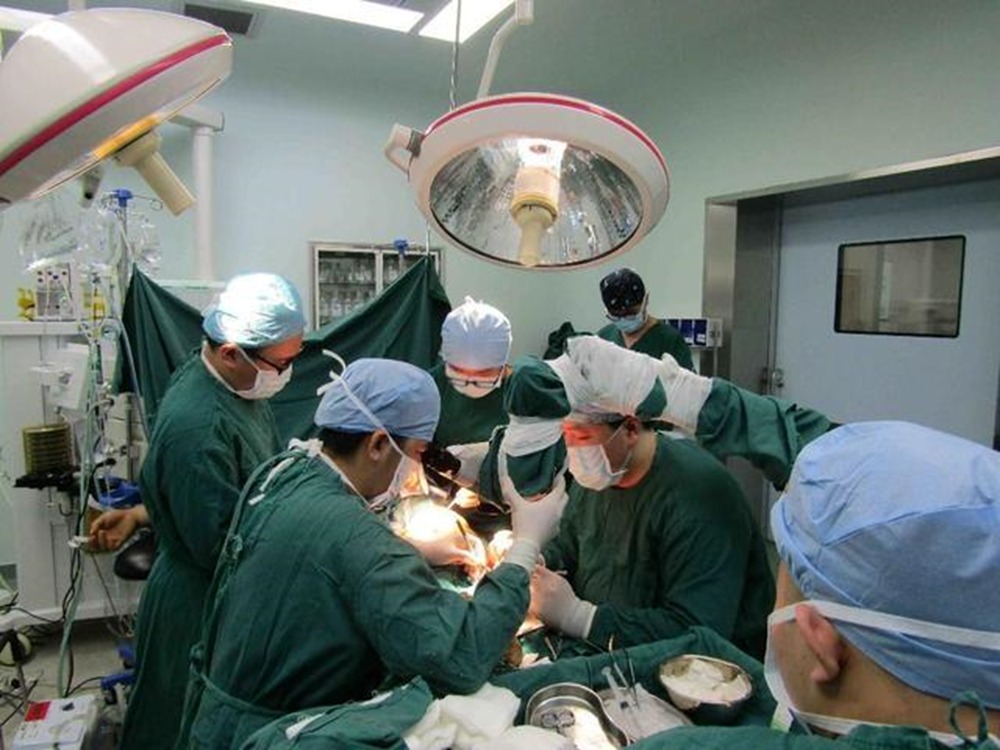Introduction to Endoscopes and Biopsy Channels
Endoscopes are remarkable tools that enable doctors to see inside the body with minimal invasiveness. They play a crucial role in diagnostics and treatments, particularly when it comes to taking biopsies. The biopsy channel is an essential component of these instruments, allowing for tissue samples to be collected safely and effectively. However, like any intricate device, endoscope parts can experience issues over time.
From blockages that hinder functionality to wear and tear affecting performance, understanding these common problems is vital for healthcare professionals and technicians alike. Let’s dive into the most frequent challenges associated with biopsy channels in endoscopes and explore practical solutions for keeping them in top shape.
Common Issues with Biopsy Channels in Endoscopes
Biopsy channels in endoscopes play a crucial role during procedures. However, they are not without their problems.
One prevalent issue is blockages and clogs. These can occur due to tissue fragments or other debris that accumulate within the channel, hindering functionality. When this happens, it becomes challenging to obtain accurate biopsies.
Damage or wear and tear is another common concern. Frequent use can lead to frayed edges or cracks in the channel lining. Such damage compromises not only the integrity of the equipment but also patient safety.
Cross-contamination poses significant risks as well. If proper sterilization protocols aren’t followed, there’s a chance of transmitting infections between patients through contaminated biopsy tools.
Addressing these issues promptly helps maintain endoscope performance and enhances overall procedural success rates.
A. Blockages and Clogs
Blockages and clogs in biopsy channels can significantly hinder endoscopic procedures. These issues often arise from residual tissue, blood, or fluid that accumulates during biopsies.
When the channel is obstructed, it can prevent tools from passing through smoothly. This not only complicates the procedure but also increases the risk of complications for patients.
In some cases, blockages lead to incomplete samples or misdiagnoses due to inadequate tissue retrieval. The stress on medical professionals escalates as they grapple with uncooperative instruments mid-procedure.
Identifying these obstructions early is essential for maintaining efficient workflows and patient safety. Regular inspections help catch potential problems before they escalate into serious concerns that could disrupt clinical practices.
B. Damage or Wear and Tear
Biopsy channels in endoscopes endure significant stress during procedures. Repeated usage can lead to wear and tear that jeopardizes their integrity.
Common signs of damage include fraying or cracking along the channel walls. Such issues may compromise functionality, making it challenging to retrieve tissue samples effectively.
Moreover, small defects might not be immediately visible but can still impact performance. Even minor abrasions can cause a rough surface that traps debris, increasing the risk of blockages.
Regular inspection is essential to identify these problems early. Addressing wear and tear promptly ensures that instruments remain reliable for patient care.
Using high-quality materials during manufacturing helps mitigate some risks associated with damage. However, proper handling techniques are equally important to maintain longevity in biopsy channels.
C. Cross-Contamination
Cross-contamination is a serious concern in the realm of endoscopic procedures. When biopsy channels are not properly maintained, there can be an increased risk of transferring pathogens from one patient to another.
This issue often arises when cleaning protocols are insufficient. Residue from previous procedures can linger in the channel, leading to potential infections. Healthcare providers must prioritize rigorous sterilization methods to combat this problem.
Moreover, inadequate training on handling these intricate endoscope parts contributes significantly to cross-contamination risks. Staff members should be well-versed in proper techniques for both insertion and retrieval processes.
Attention must also focus on how tools interact within the biopsy channel during exams. If instruments aren’t adequately cleaned or stored correctly, they may introduce contaminants that compromise patient safety.
Awareness and diligence are key factors in preventing cross-contamination related issues within endoscopy practices.
Effects of These Issues on Medical Procedures
Issues with biopsy channels can significantly impact medical procedures. Blockages and clogs can delay diagnoses, leading to a longer wait for patients who need urgent care. When physicians encounter obstructions, it often results in prolonged procedures, increasing patient discomfort.
Damage or wear and tear not only affects the functionality of endoscope parts but also raises concerns about the reliability of results. A compromised channel might yield inaccurate samples, complicating treatment plans.
Cross-contamination poses another serious risk. If an endoscope is not properly maintained, infections can spread between patients. This jeopardizes their health and undermines trust in medical practices.
The effects are far-reaching—impacting everything from patient safety to overall healthcare efficiency. Addressing these issues promptly is crucial for ensuring quality care and maintaining high standards in medical environments.
Solutions for Maintaining and Fixing Biopsy Channels
Regular cleaning is essential for biopsy channels in endoscopes. Residual tissue or fluids can lead to blockages, impacting their functionality. A thorough routine should include using appropriate cleaning solutions designed specifically for delicate endoscope parts.
When issues arise, repairs may be necessary. Skilled technicians can evaluate damage and determine if a repair will suffice or if replacement of the channel is required. Utilizing high-quality replacement parts ensures longevity and reliability.
It’s also crucial to adhere to manufacturer guidelines regarding maintenance intervals and techniques. This proactive approach minimizes risks associated with clogs or cross-contamination.
Investing in training staff on proper handling practices helps prevent wear and tear over time. Regular assessments of equipment condition contribute significantly to safe medical procedures involving biopsy channels.
A. Regular Cleaning and Maintenance
Regular cleaning and maintenance of biopsy channels in endoscopes are crucial to ensure optimal performance. These delicate components collect debris, tissue samples, and other residues that can lead to blockages.
Routine inspections help identify potential issues early on. This proactive approach saves time during procedures and enhances patient safety.
A systematic cleaning protocol should be established. Use appropriate solutions designed for medical instruments to avoid damaging sensitive parts.
Consider using specialized brushes or tools tailored for biopsy channels. They effectively remove stubborn clogs without compromising the integrity of the endoscope.
Documentation of each maintenance session is important too. Keeping track ensures consistency and accountability in maintaining these essential endoscope parts.
Training staff on proper handling techniques also plays a significant role in extending the life of biopsy channels while minimizing risks associated with improper use or care.
B. Repairs and Replacements
Repairs and replacements are crucial when dealing with the biopsy channels in endoscopes. Over time, wear and tear can lead to malfunctions that compromise their effectiveness.
Identifying specific issues is key. If a channel shows signs of significant damage, it may require repair or even replacement to ensure optimal performance during medical procedures.
For minor damages, skilled technicians can often perform repairs that restore functionality without replacing entire components. However, if the structural integrity is compromised, opting for new endoscope parts might be necessary.
Investing in high-quality replacement parts not only enhances reliability but also extends the lifespan of your equipment. It’s essential to source these from reputable suppliers who understand the unique demands of surgical environments.
Regular assessments can prevent larger problems down the line by highlighting areas needing attention before they escalate into more costly solutions.
Importance of Proper Care for Biopsy Channels
Proper care for biopsy channels is crucial in endoscopy. These narrow conduits play an essential role in obtaining tissue samples safely and effectively.
Regular maintenance helps prevent blockages that can compromise procedures. Clogs may lead to delays or, worse, inaccurate diagnoses. Keeping the channel clean ensures optimal performance during critical moments.
Moreover, damaged biopsy channels pose significant risks. Wear and tear can cause leaks or breakage, leading to complications for both patient and physician. Routine inspections help identify these issues early.
Cross-contamination is another serious concern tied to inadequate care. Ensuring sterilization between uses protects patients from infections and maintains the integrity of results.
By prioritizing proper care of biopsy channels, healthcare professionals enhance patient safety while boosting overall efficiency in medical practices. This attention to detail reflects a commitment to excellence in patient outcomes, ultimately benefiting everyone involved.
Contact Us
For those who work with endoscopes, understanding the intricacies of biopsy channels is essential. Regular maintenance and prompt attention to any issues can significantly enhance their performance and reliability.
If you’re facing challenges with your endoscope parts or need expert guidance on handling biopsy channel concerns, we are here to help. Our team offers specialized support for all aspects of endoscopic equipment, ensuring that you have reliable tools at your disposal. Reach out today to discuss how we can assist in maintaining optimal functionality for your medical procedures.
Keep an eye for more news & updates on Tribune Indian!




